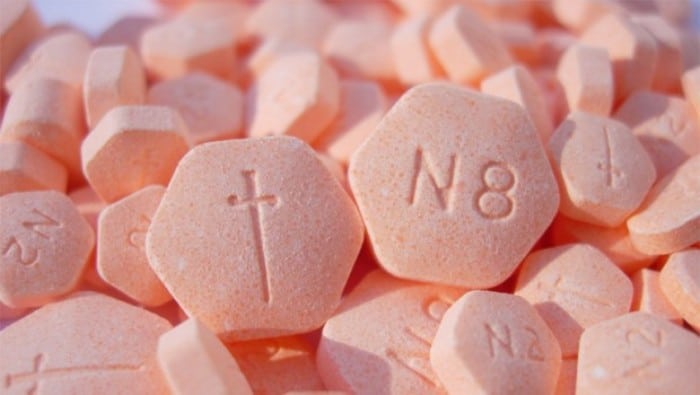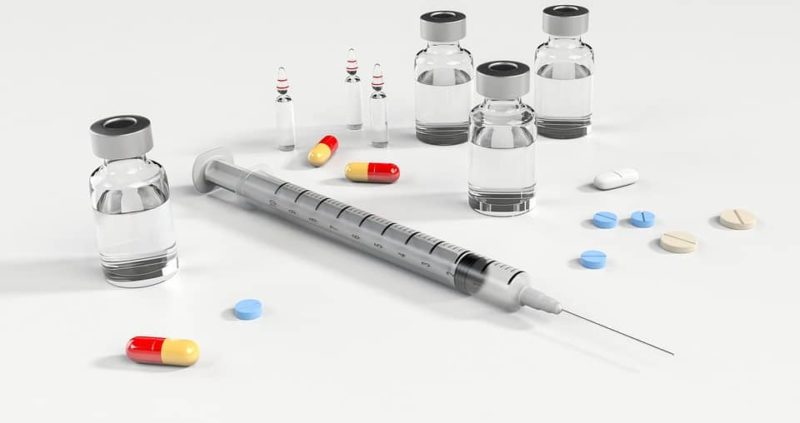Suboxone is a drug prescribed to treat addiction to other narcotic or opiate substances. It is composed of buprenorphine and naloxone.
While buprenorphine is categorized as an opioid medication, naloxone blocks its relieving effects in order to prevent addiction to it.
In this article, you can find information about Suboxone, its effects, and its duration in the human system.
Table of Contents
Suboxone

The substances that comprise Suboxone are:
1. Buprenorphine
This is a mild narcotic. It is an analgesic that has been used traditionally to manage pain in moderate levels. It has been commercially available since 1985.
2. Naloxone
It is also known as Narcan. It is an opiate antagonist. It is present in Suboxone in order to suppress or decrease the addictive effects of narcotic drugs in the system, including those produced by buprenorphine.
Suboxone started to be marketed in the USA in 2002 as a treatment for addiction to narcotics under medical prescription.
As a formulation of buprenorphine, it is a semi-synthetic narcotic used with the purpose of treatment of addiction to other drugs like heroin or hydrocodone.
Suboxone is supposed to reduce the cravings for drugs in a person that suffers from drug addiction. It also limits the withdrawal symptoms. Despite of being a drug itself, Suboxone is a safer alternative and its doses can be regularized and decreased until the end of the addiction.
This drug is administered in the form of pills or sublingual strips or films. It can be dissolved under the tongue without the need of additional water.
Effects Of Suboxone On Body
A. Short-Term Effects
Suboxone is a depressant substance; it slows down the actions and processes of a person.
The short-term effects of suboxone that are beneficial and they include:
- An effect of pain relief that is up to 30 times more powerful than morphine.
- A moderate euphoria that may last for approximately 8 hours.
- The sensation of calmness and well-being that includes a decreased perception of stress and worries.
On the other hand, Suboxone may cause undesirable short-term effects. But these are less intense and more dispersed.
They include:
- Sleepiness
- Confusion
- Nausea
The short-term effects of Suboxone can last up to 3 days. Their intensity can dramatically increase if suboxone intake is combined with other depressants substances like alcohol or benzodiazepines.
This combination can induce:
- Breathing problems
- Excessive lethargy
- Death
B. Long-Term Effects Of Suboxone
The abuse of Suboxone can lead to severe long-term effects on the physical and psychological health. These include:
- Drowsiness and disorientation.
- Gastrointestinal issues such as constipation, nausea, or vomiting.
- Decreased pain tolerance when suboxone is not taken.
- Depression, anxiety, isolation, difficulty in socializing.
- In the long run, this can lead to life quality-damaging consequences like financial strain, legal problems, inability to take social responsibilities, failure in relationships, etc.
Allergies & Side Effects Of Suboxone
Suboxone can cause allergic reactions in the body of some people. In case of any of these symptoms, make sure you get medical assistance urgently:
i. Difficult, weak, shallow breathing.
ii. Swelling in the face, lips, tongue, or throat.
iii. Extreme drowsiness and confusion.
iv. Slurred speech and blurred vision.
v. Nausea accompanied of pain in the upper stomach, itching, loss of appetite, jaundice, clay-colored stools and dark urine.
vi. Withdrawal symptoms: runny nose, watery eyes, muscle pain, diarrhea, vomiting, intense shivering, feeling of extreme heat or cold.
Side Effects Of Suboxone
Suboxone can also produce undesired side effects in the organism, especially in older adults that are weak, poorly nourished or severely ill.
The side effects include:
i. Insomnia and other sleep problems.
ii. Swelling of the upper and lower limbs.
iii. Excessive sweating.
iv. Pain in the head and other parts in the body.
v. Digestive problems, constipation, vomiting, nausea.
vi. Numbness in the mouth, redness, tongue pain.
vii. Changes in the pupils.
Some of the side effects may occur due to the sudden stop in the use of Suboxone. These will be known as withdrawal symptoms and they take place due to the addictive effect of the drug after the body starts tolerating and depending on it.
Dependence Of Suboxone
Suboxone contains buprenorphine. This is an opioid, and it can lead to dependence. That means, after supply of this drug to the body, this starts building a tolerance to it and may even feel discomfort when the treatment is stopped.
Thus, the substance used for the treatment of addiction becomes the addictive substance now.
This dependence produces what are known as withdrawal symptoms. They are similar to the flu and can last for around a week. Dependence can be identified by the onset of the withdrawal symptoms as soon as 48 hours after the last dose of Suboxone.
This condition requires a detox procedure that is medically monitored. It aims at keeping the patient in a state of comfort and preventing them from continuing with the use of the drug to satisfy their craving or to avoid the withdrawal symptoms.
Addiction Of Suboxone
The addiction to suboxone is not a common one. But when it happens it is as troublesome as any other addiction. In case of suspicion of an addiction, the best is to ask for medical advice and gradually decrease the intake of suboxone under professional supervision to avoid the worsening of the condition.
In addition, there are specialized facilities that help coping up with this disorder and help the affected individuals to come out of it.
Suboxone is a drug used to overcome addiction to opioids. But it is an opioid itself, and as such, it can cause addiction.
Suboxone often becomes a highly sought drug of abuse.
The cases of Suboxone addiction frequently involve certain risk groups such as:
- People that already consume narcotics.
- People that are not conscious about the effects and risks of drugs.
- Those addicted to heroin.
- People under Suboxone treatment that start depending on it.
Suboxone is a substance that requires a high care to be maintained out of the reach of people that are not under its treatment (children, unaware persons, etc.) Intake of the drug for reasons different from its medical purpose drastically increases the risk of addiction.
Addiction Treatment
Addiction to suboxone needs to be treated under professional supervision. The treatment of Suboxone addiction is a multi-stage process.
It consists of various steps, namely: detox stage, therapeutic stage, and a long-term recovery stage that usually requires aftercare efforts by the patient.
Detection And Duration Of Suboxone In The System
Suboxone is a medication that treat addiction to opioids. Suboxone is prescribed to reduce craving for other drugs like heroin.
But suboxone in itself is a drug, and it often arises the following question: “how long does it stay in your system?”
Patients also wonder whether suboxone can be detected in drug tests.
The suboxone maintenance treatment requires regular drug tests to check the presence of other drugs. Drug tests can also be ordered by institutions and workplaces. The detection of a drug depends on its characteristic and usage factors such as the dose, the frequency of use, and the last time of use.
The buprenorphine component of suboxone has a particularly long elimination half-time. This concept is defined by the amount of time a substance takes for half of the dose taken to get eliminated from the body.
In the case of buprenorphine, it is 37 hours. This means that suboxone could remain in the body from three to eight day still it is no longer detectable by drug tests.
Buprenorphine can be detected in urine, hair, saliva, and blood by methods such as:
- Gas chromatography
- Mass spectrometry
- ELISA (enzyme-linked immunosorbent assay)
- CEDIA (cloned enzyme donor immunoassay)
- Liquid chromatography-tandem mass spectrometry test
The average detection time for this substance is of up to 3 days in urine, just after a single dose. This means that the regular intake of high doses of this drug could be detected after several days later also.
However, the duration of suboxone in the body is not the same for every individual.
It depends on factors like:
- Weight and height of the body
- Content of body fat
- Age
- Speed of metabolism
- Liver health
- The doses taken
The metabolism process of suboxone in the liver gives rise to metabolites that stay in the organism for more time than the drug in itself.
These metabolites can also be detected by modern drug tests. An individual may get a positive test for buprenorphine even after 8 days from its consumption.
- Blood tests can detect it after around 2 hours. They are the most invasive.
- Saliva tests can detect it till after a week. These are non-invasive and are the simplest to administer.
- Urine tests can detect buprenorphine between 40 minutes to 2 weeks from its consumption. It is the most commonly used test.
- Hair tests can work from 1 to 3 months. But these tests are not frequently done due to their low reliability.
Precautions While Using Suboxone
Suboxone is a drug and it is important that it is used consciously and with care.
These are some precautions regarding the use of Suboxone:
a. Never take suboxone in doses larger than those that are prescribed or for a longer amount of time than the one recommended by the doctor.
b. Suboxone may be addictive even with the intake of regular doses.
c. Do not share Suboxone with anyone else, particularly with someone with a history of drug consumption or addiction. Make sure you keep it in a place that is not easily accessible to others.
d. The misuse of this narcotic can not only cause addiction, but also intoxication, and death. Never use this medicine without a medical prescription.
e. In case of allergies to buprenorphine or naloxone, do not use suboxone.
f. Inform your doctor about any of the following conditions to avoid problems arising from Suboxone consumption:
g. Any kind of breathing or lung disorder.
h. Urination problems or enlarged prostate.
i. Liver or kidney disorders.
j. Problems in the adrenal gland, thyroid abnormalities, or gallbladders disorders.
k. Abnormalities in the spine curvature which might influence breathing.
l. A past of addiction to drug or alcohol.
m. Injuries in the head, seizures, mental disorders, or brain tumors.
n. Do not share, sell, nor buy Suboxone without a prescription. It is against the law.
o. In case of pregnancy, the baby may develop a dependence on Suboxone and suffer from withdrawal symptoms that will require several weeks to be treated.
p. Do not breast-feed while the Suboxone treatment is going on. These substances can pass into breast milk and hence into the body of the baby.
q. Do not suddenly stop taking Suboxone without medical consent. It can cause withdrawal symptoms.
r. Do not consume Suboxone along with other depressant substances like sedatives, alcohol, tranquilizers. It is extremely dangerous and can lead to unconsciousness and death.
s. Accidental or deliberate ingestion of Suboxone by children can lead to severe breathing problems and death.
t. Injection of Suboxone into the body can cause pain, cramps, vomiting, diarrhea, insomnia, anxiety, and cravings.
u. Do not drive, use heavy machinery or perform any risky activities until you familiarize with the effects of Suboxone.
v. Suboxone may cause side effects as explained above.
How To Get Suboxone Out Of Your System?
Although there are no specific suboxone removal methods, trying the various tips recommended below for drug detoxification can help. The response to these methods might vary within individuals, but they are definitely worth a try for their overall health benefits.
Some natural detox methods that can remove toxins and drugs from the body include:
1. Drinking Natural Fluids

Water consumption can help in flushing out unwanted and artificial substances from the system. Either by sweating or excretion, water carries the substances out of the body with itself.
Other drinks that help in detoxifying are natural and herbal teas.
Fresh ginger tea in the morning cleanses the system by inducing sweating, and other detox processes. To make tea a ginger slice should be added into a mug of boiling water.
Another option is green tea. This drink has many natural antioxidants that help in the self-cleaning of the body.
2. Exercise

Activities such as aerobics, swimming, jogging, cycling, and others stimulate the overall fitness of the body. They stimulate the vital organs like the kidney, liver, and heart and help in removing the drugs through sweat.
3. Relaxation Therapies
Some de-stressing therapies like saunas, massages, or salt baths open the pores in the skin and make the toxic substances present below the skin surface come out. Moreover, reducing day-to-day stress is a key to the promotion of detoxification of the body.
4. Nutritious Diet

Consumption of healthy food is the path towards healing. This should be devoid of refined sugars and fats and as filled as possible with organic fruits and vegetables. Make sure you include in your diet these detoxifying foods:
- Green and leafy vegetables, especially seaweed, wheatgrass, and kale. Their fiber intake boosts the flushing out the toxic substances and boosts the immune system.
- Intestine cleansers like chia seeds, cilantro, lemon, and parsley.
- Berries (raspberries, strawberries, blueberries) that are a source of antioxidants.
- Omega 3 sources like fish, almonds, avocados: they help in handling depression and cravings.
5. Dandelion Tablets
The tablets made from extracts of this flower enhance the detoxification of the liver and help in removing drugs from the body organs.
Suboxone should be exclusively used as a treatment method prescribed by a doctor. It is just a part of the complete treatment plan of opioid dependence, along with professional counseling and psychological and social support.
The treatment involving the intake of Suboxone should only be started under the direction, approval, and supervision of physicians qualified under the Drug Addiction Treatment Act.





